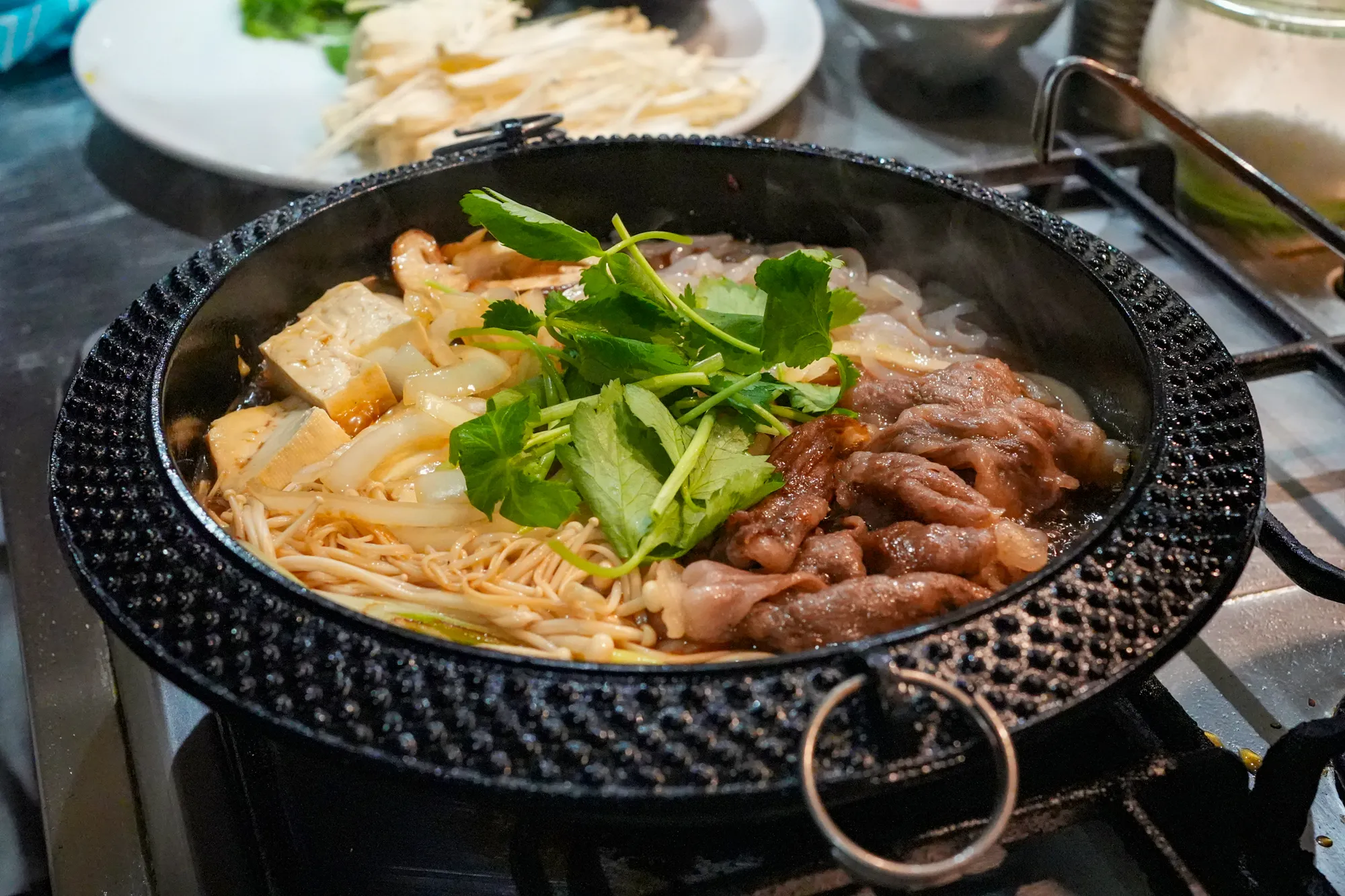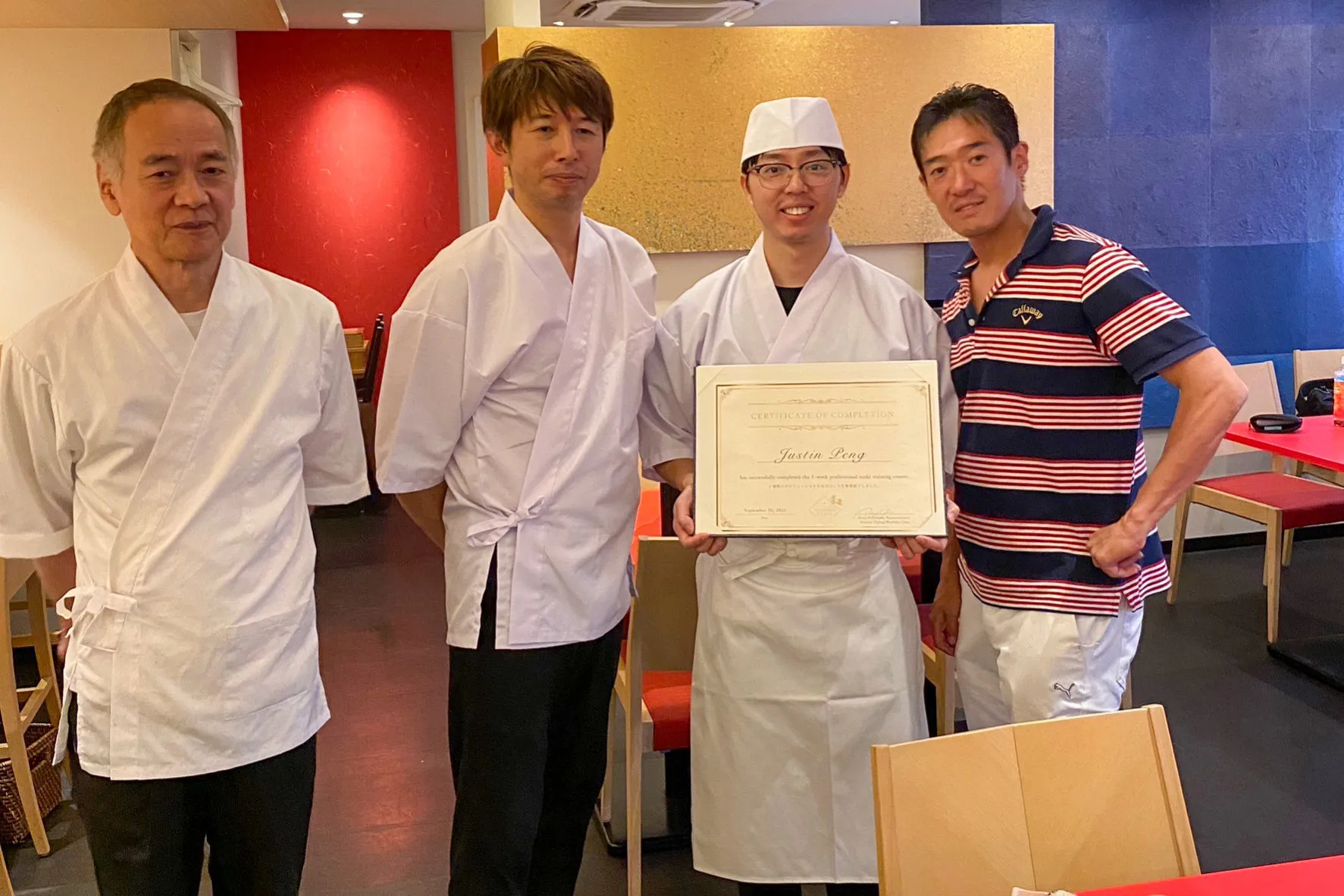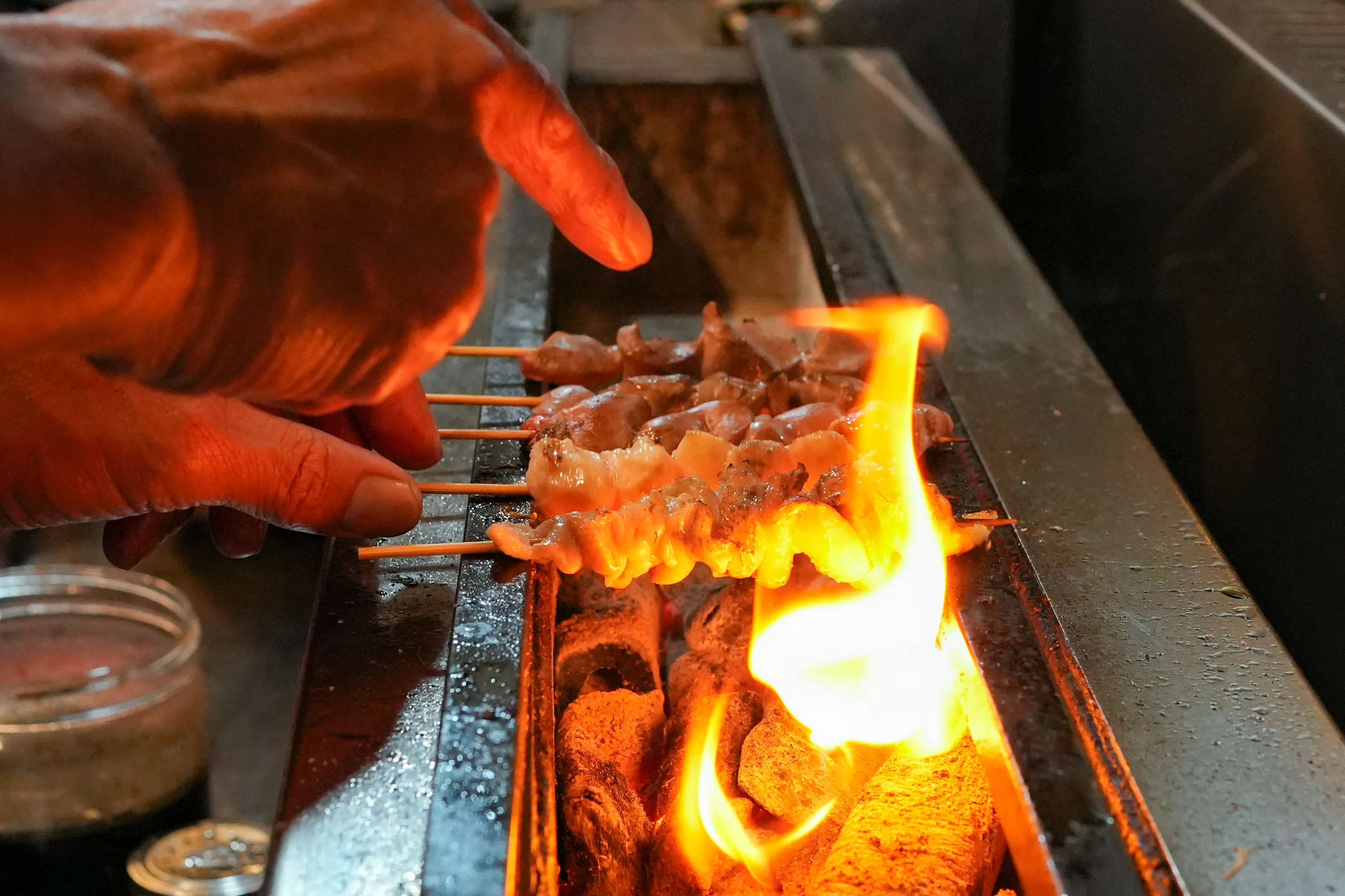Lesson Report: Four-Week Private Sushi Course (Week 3 to 4)
May 8, 2024
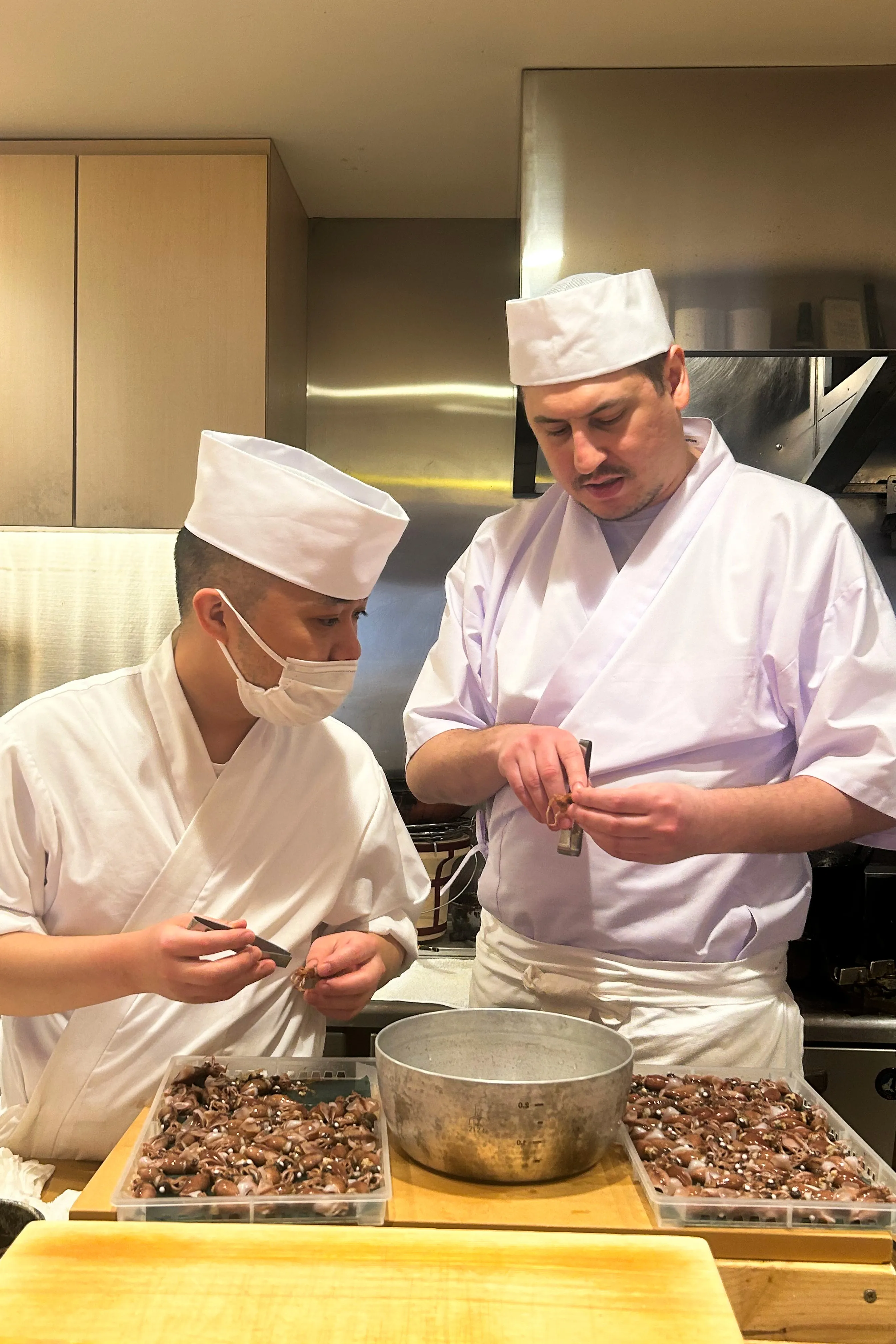
It is the beginning of the second half of the 4-Week Sushi Course. Building upon the fundamentals learned in the previous two weeks, the student will go to a more advanced phase. He is now tasked with overseeing the entire process of preparing sushi rice, from rinsing to stirring. He is also responsible for the tasks he learned previously. For instance, he now has a better understanding of them and is capable of skewering shrimps before boiling and cutting them open from the center. In fact, this task requires a good understanding of the nature of Japanese kitchen knives.
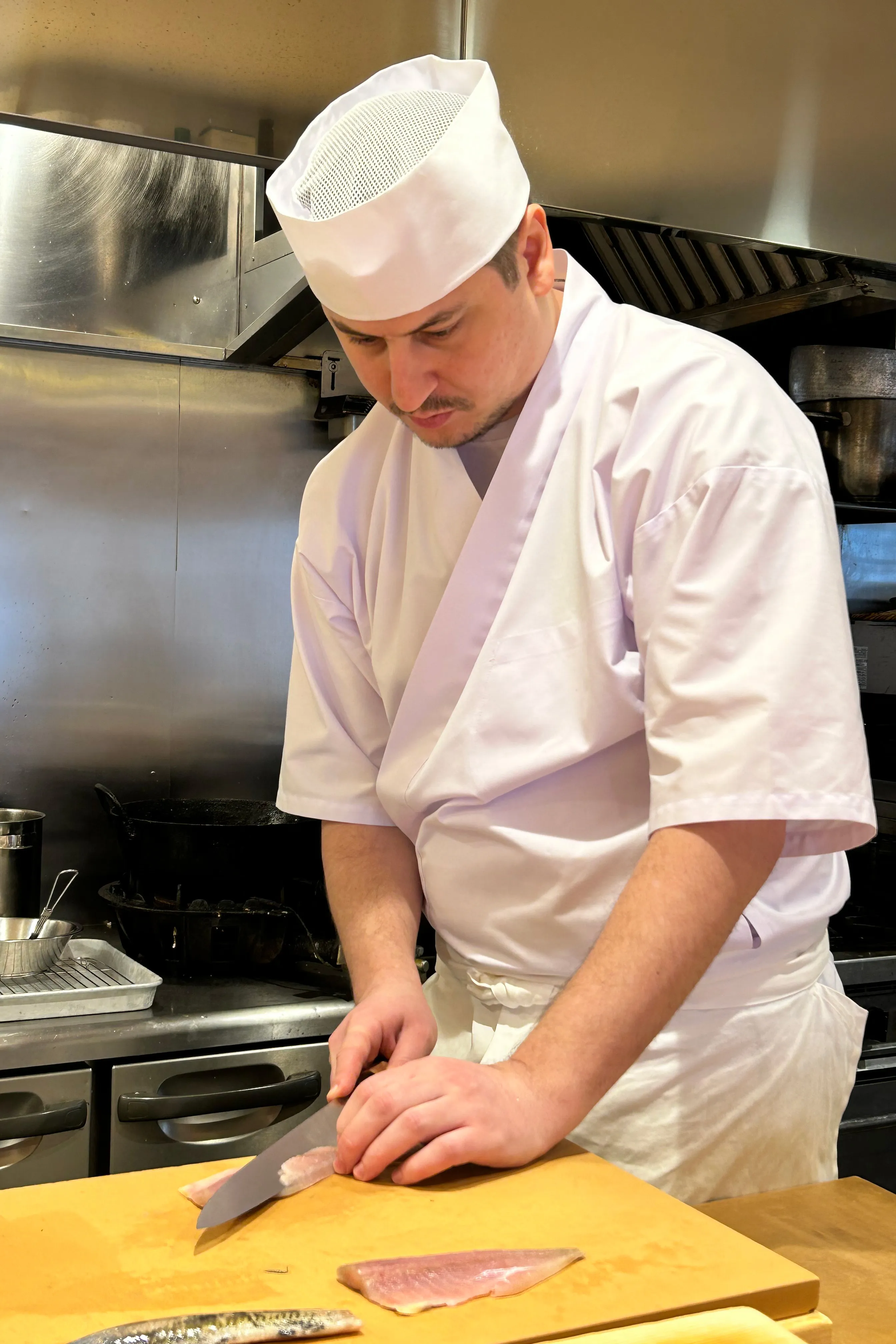
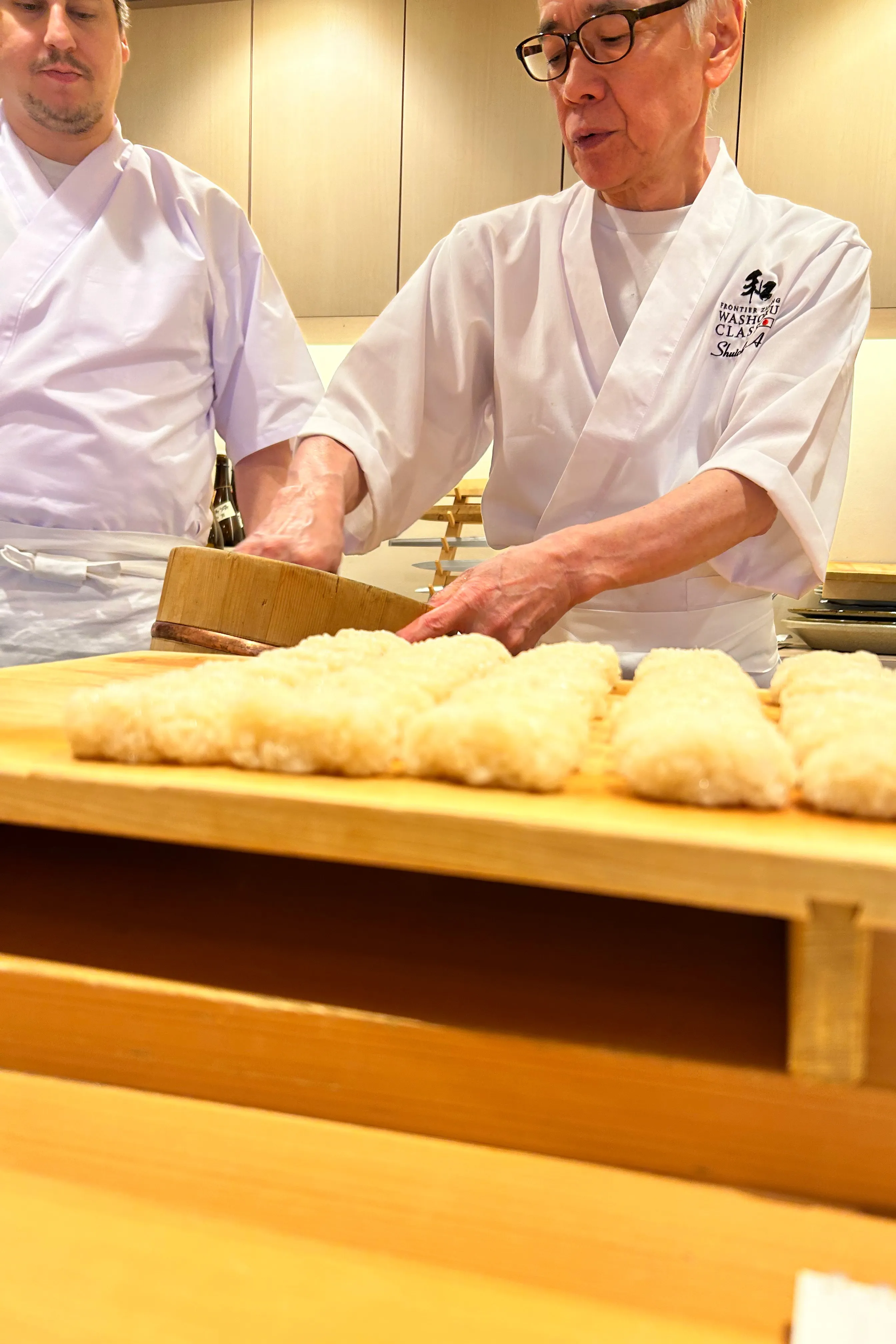
The student carefully fillets fish. In fact, he has scheduled hands-on practice for the next day at his request, during which he will invite his friends and serve them sushi. This further motivates him to prepare fish and practice making nigiri diligently. He asks the instructor many questions and learns a lot of new things.
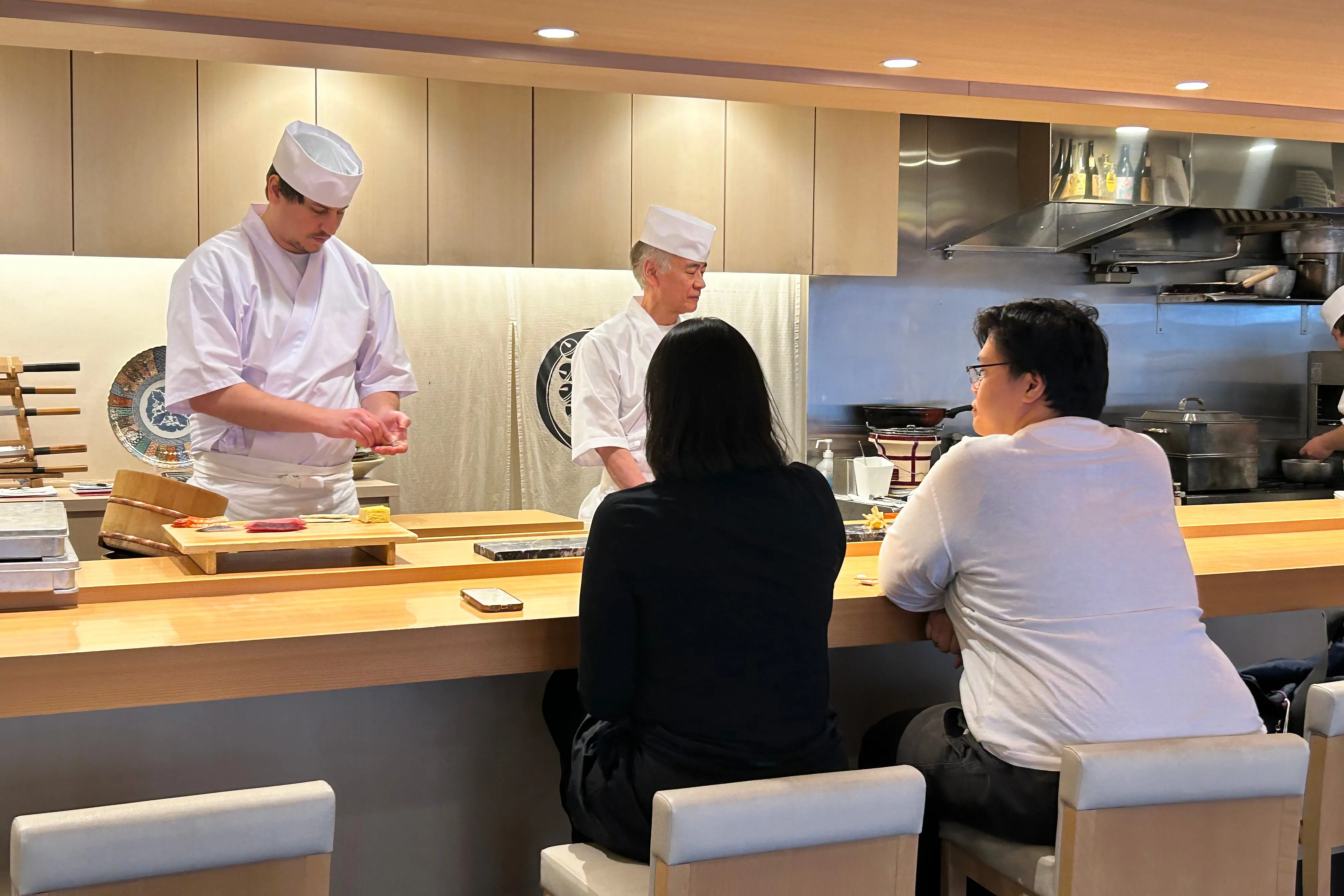
Following the routine of rice and fish preparation and basic practice, the hands-on training begins. The student attempts to make nigiri with fish he has never practiced with before. He also endeavors to serve multiple courses such as an appetizer, simmered dish, grilled dish, steamed dish, and soup. In fact, these are the topics he will learn about the next day. By familiarizing himself with them in advance, the lessons the following day should proceed more smoothly. His friends are delighted with his efforts. It appears he has overcome the initial hurdle of the program.
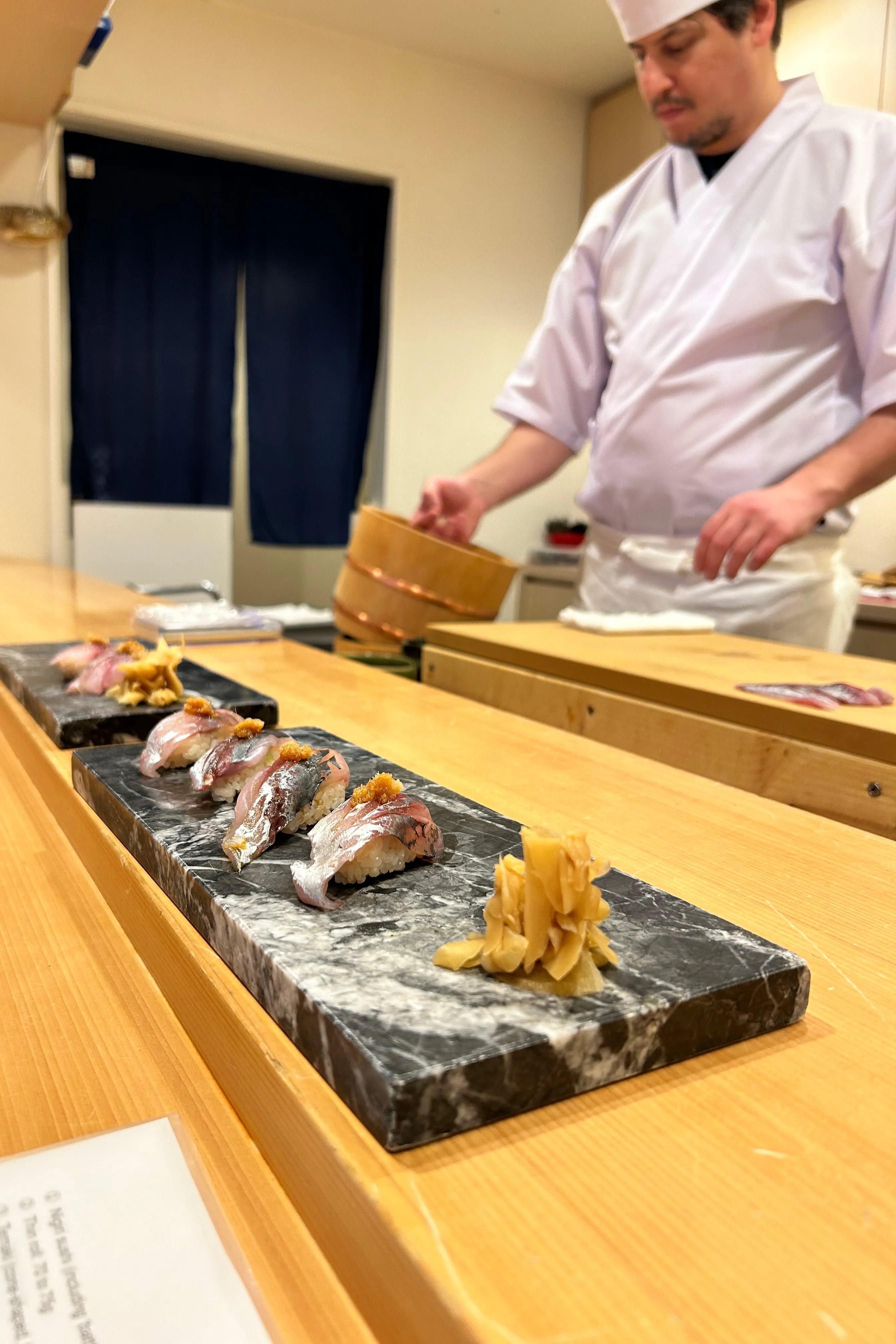
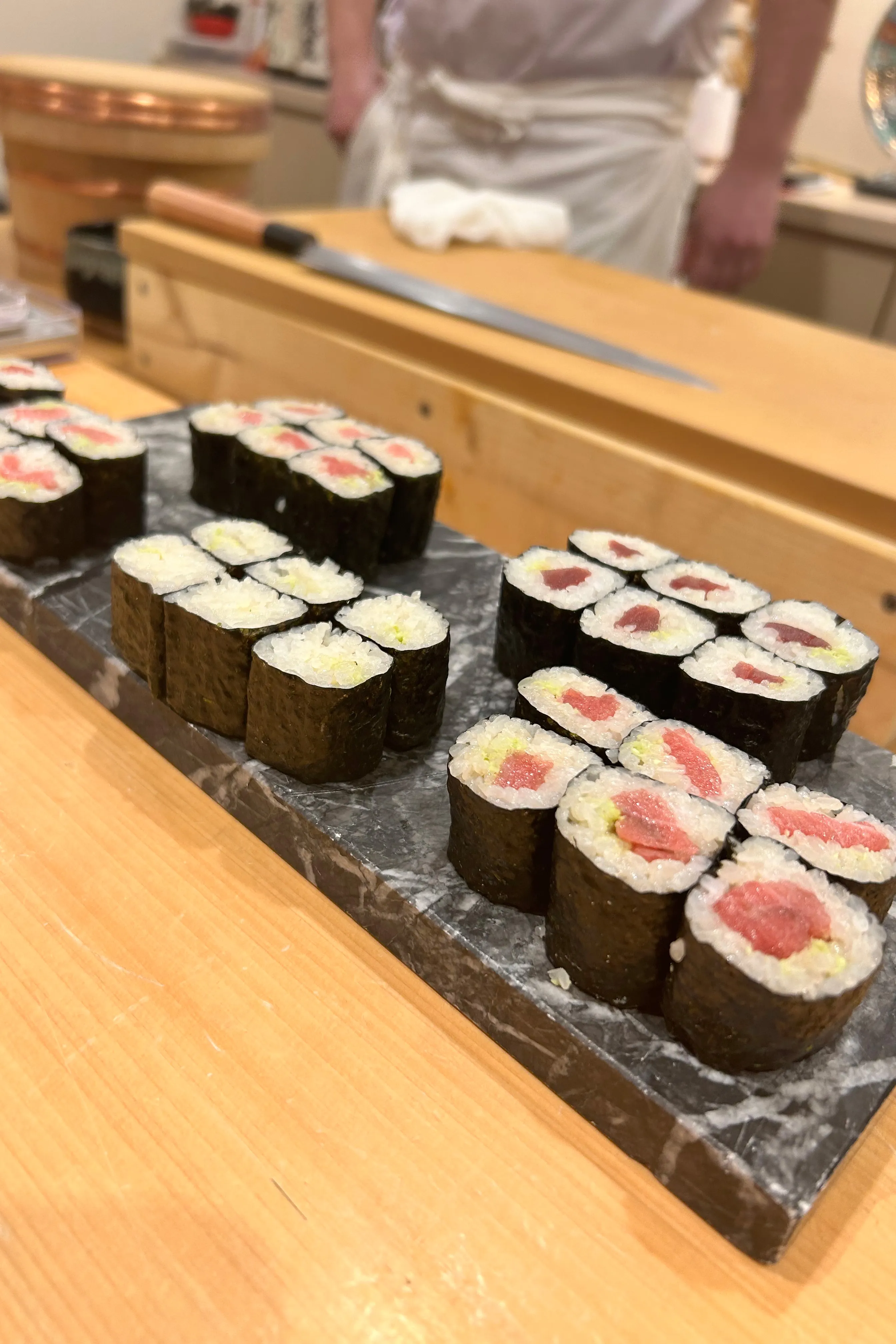
Daily repetitive practice is crucial, particularly for sushi chefs, especially in tasks such as fish filleting and making nigiri. Above all, it is essential to master the steps correctly and continue practicing until they become automatic. This enables him to sustain his practice even after returning home.
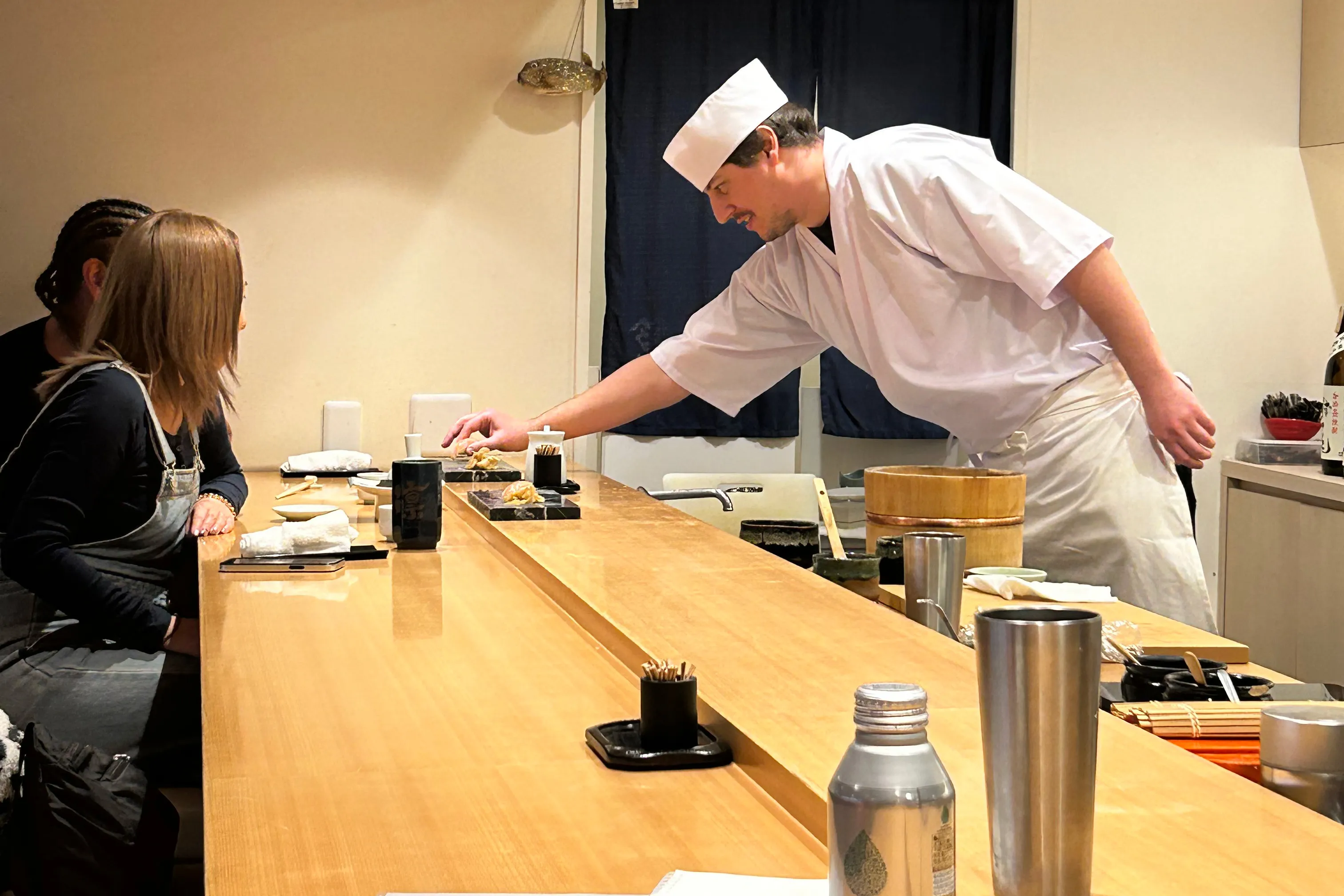
A patron arrives at the sushi restaurant while the student is practicing. Suddenly, he is tasked with serving nigiri to the patron. He feels thrilled, realizing that his daily hard practice has paid off. Subsequently, the patron requests the student to serve sushi on the final day of the Sushi Course. This opportunity will further enhance the student’s skills, enabling him to serve even better nigiri and sushi rolls to the patron.
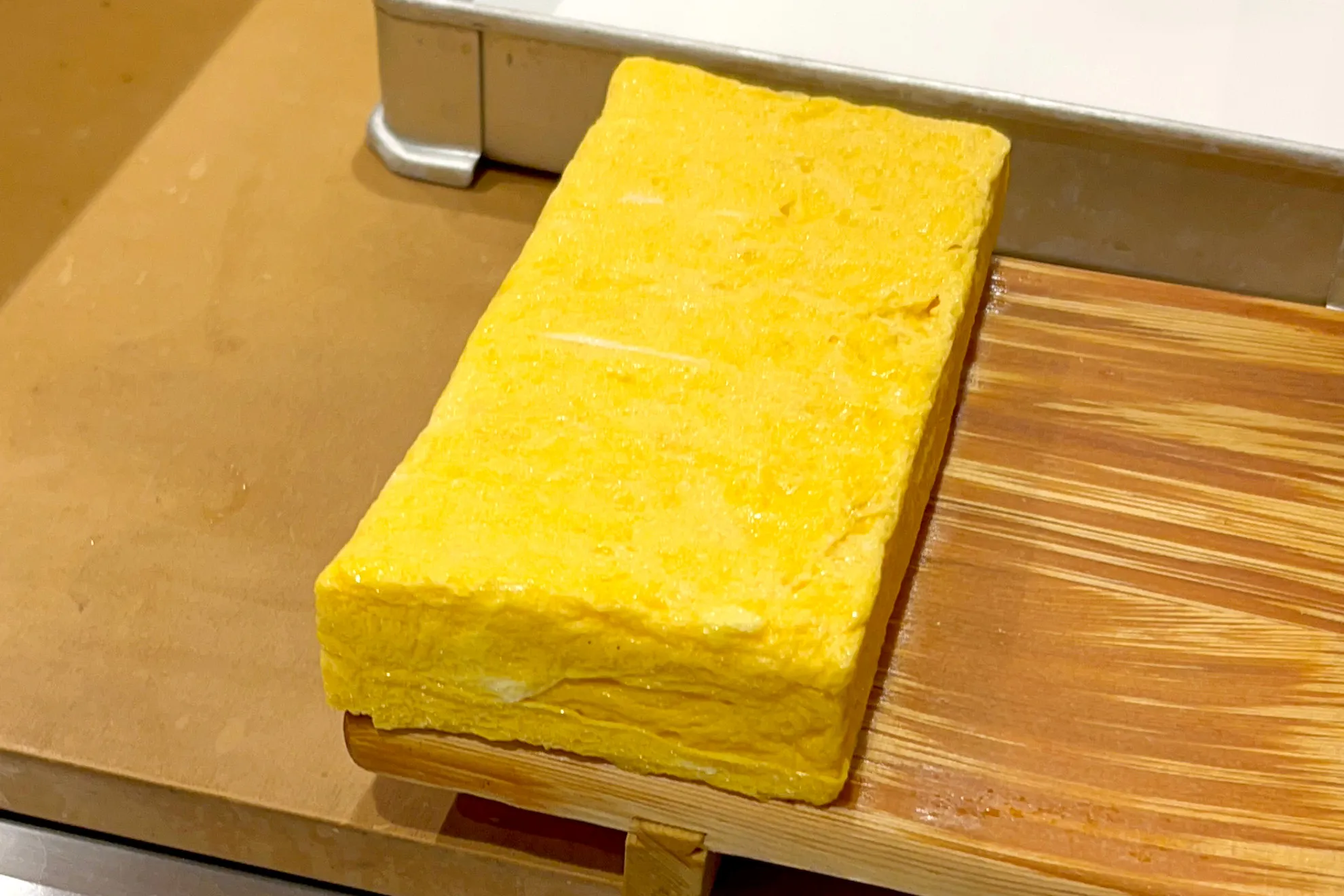
Every student struggles with ‘tamago’ (Japanese-style rolled omelet) for sushi. Using a copper pan makes it even more challenging to make ‘tamago’ because of its weight. The student eagerly asks questions not only about how to roll ‘tamago’ but also about how to handle the copper pan.
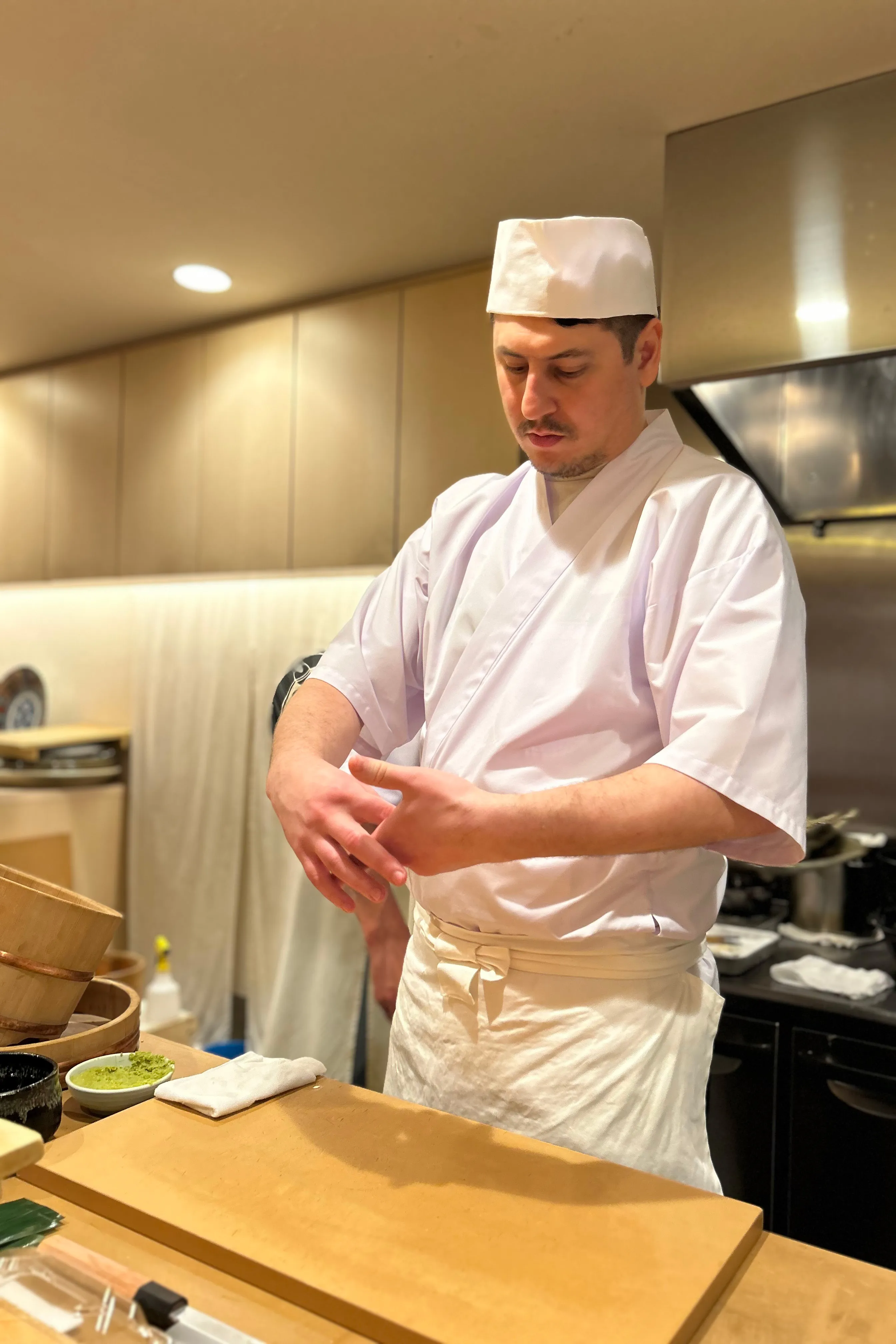
The student can make well-shaped sushi rice balls without fish, but he finds it difficult to maintain consistency in shape when adding fish to the rice. He continues to practice, receiving advice from the instructor.
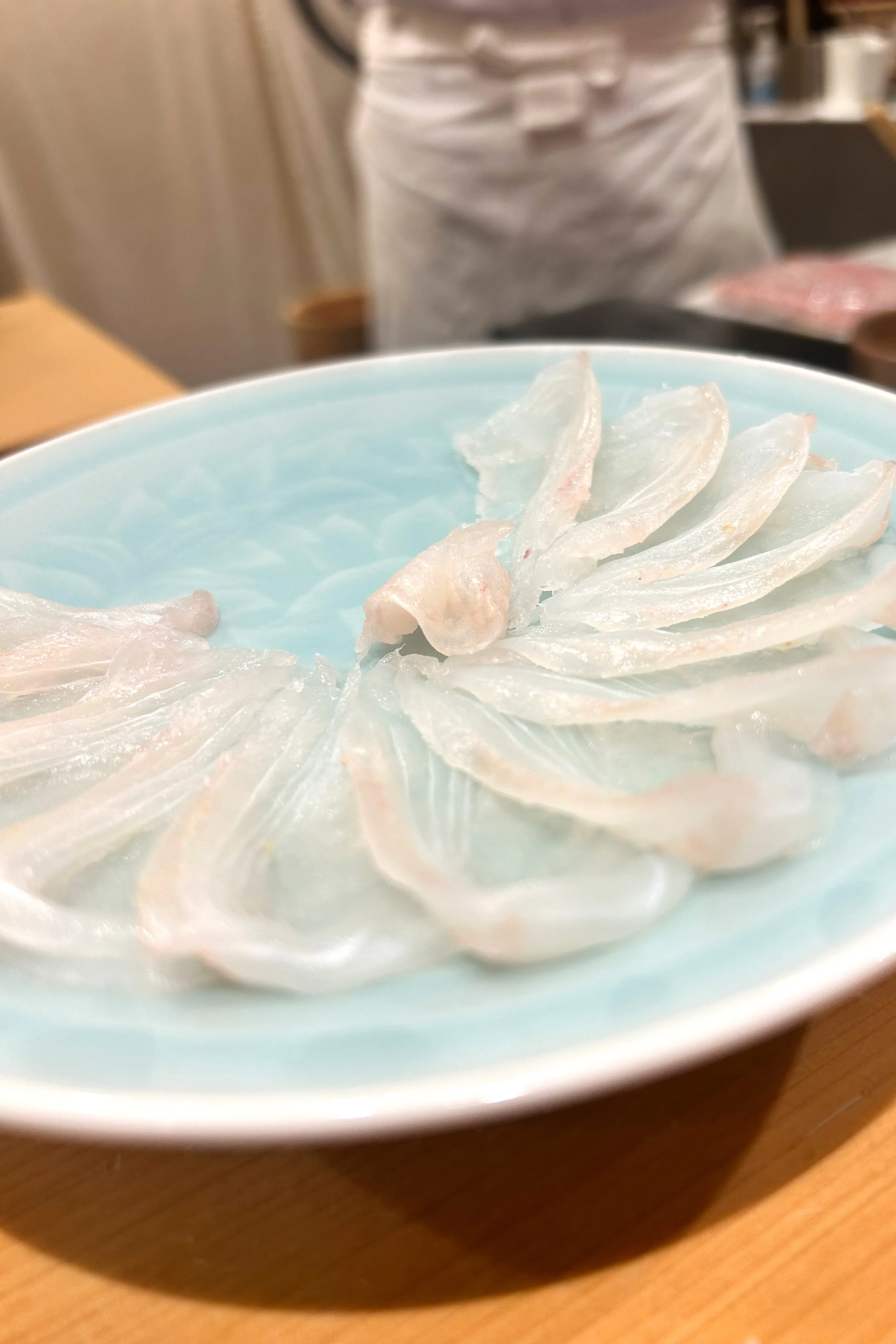
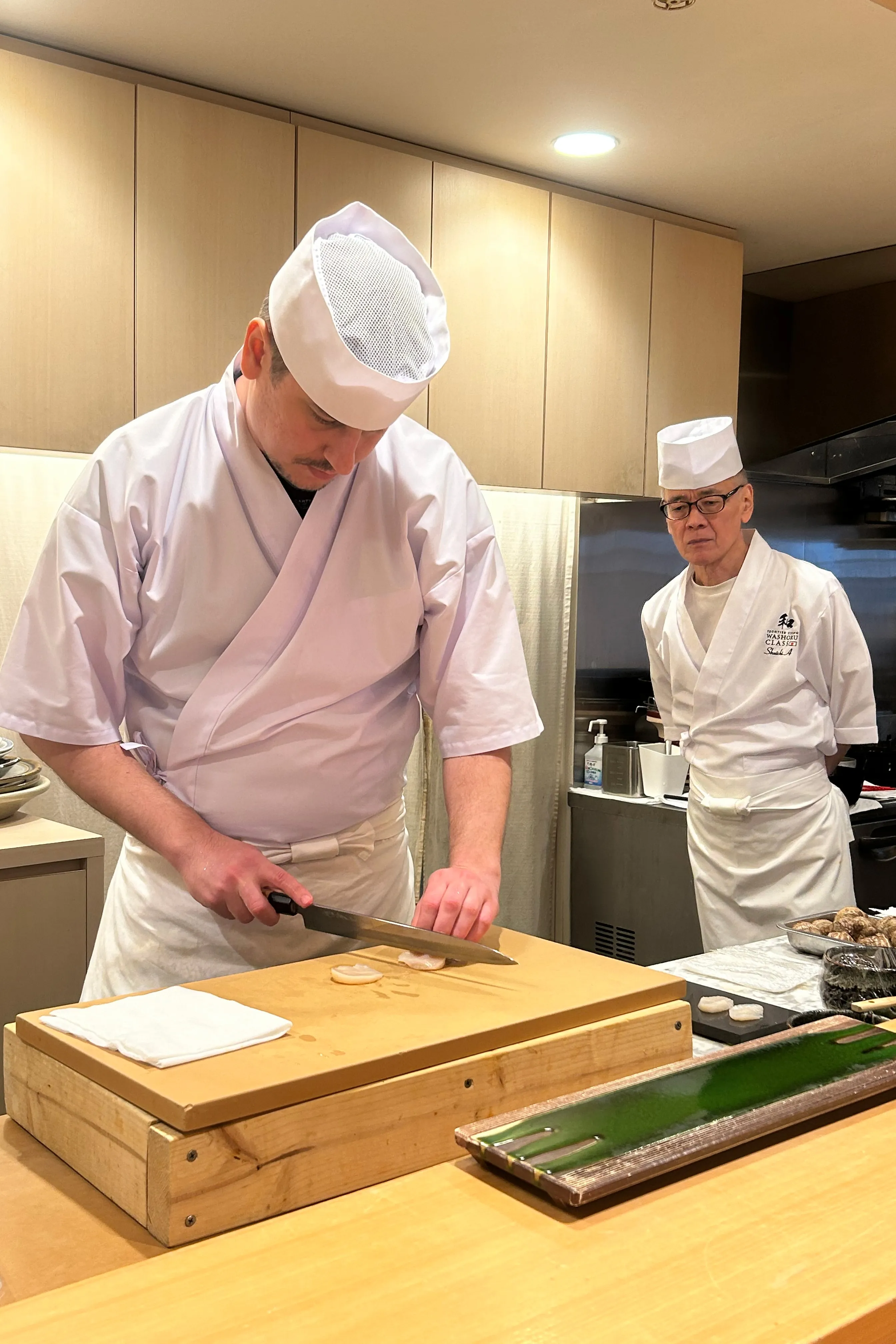
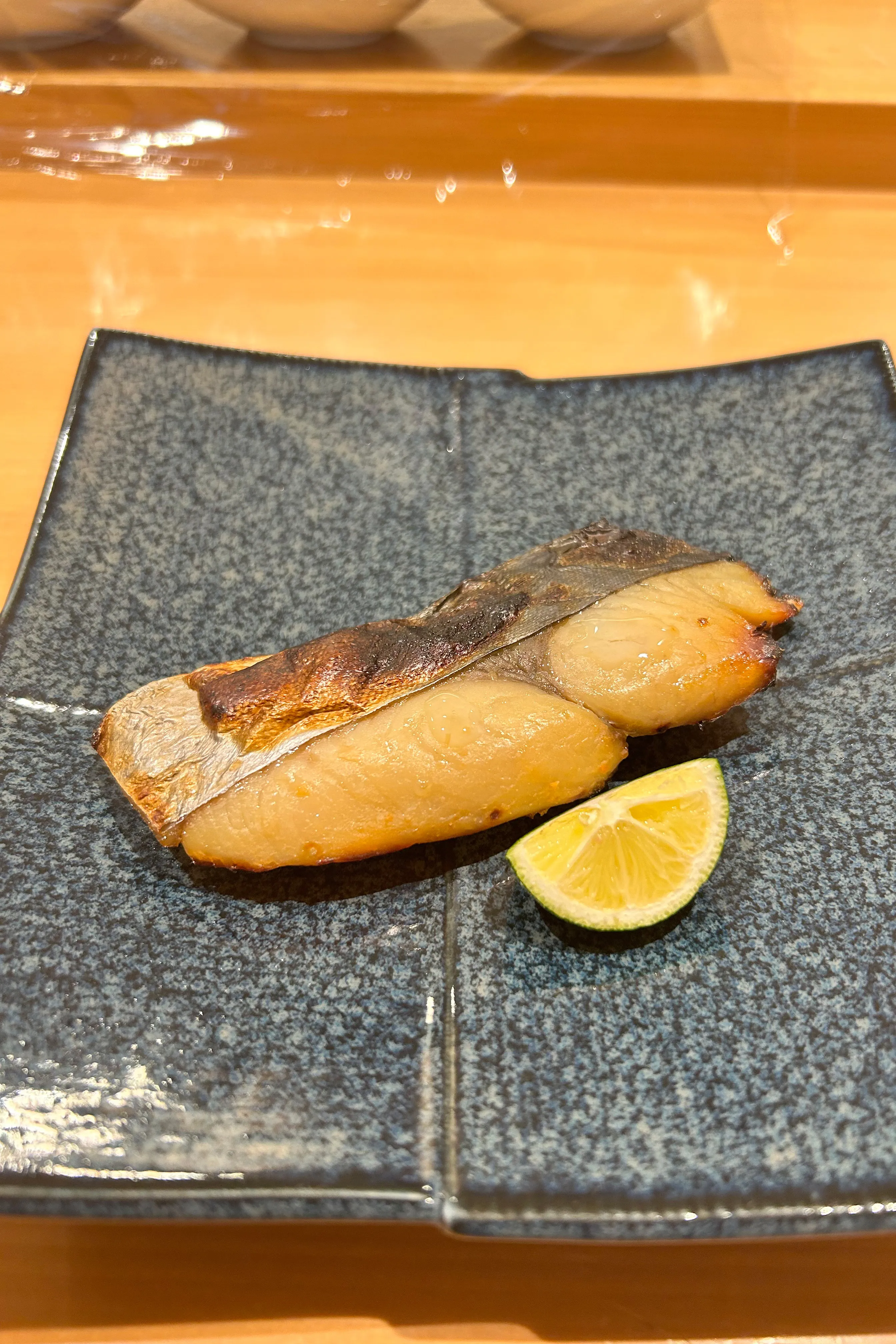
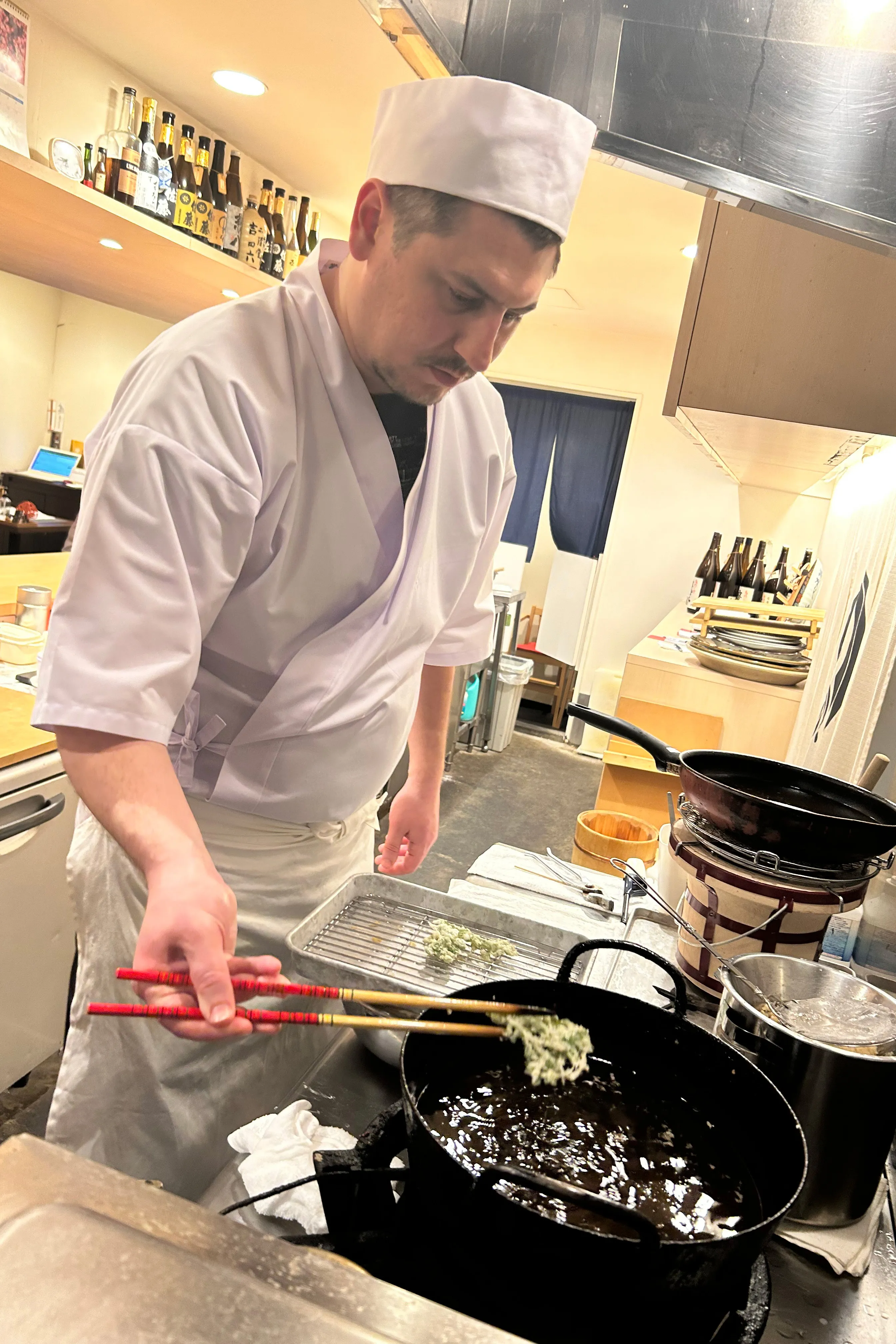
The methods of slicing fish for sushi and sashimi are different. Interestingly, not only does the appearance vary, but also the texture of sliced fish depends on how it’s arranged on a plate. Therefore, it is vital to consider how you would like to present fish to your customers.
The student also learns about simmered dishes, deep-fried dishes, steamed dishes, and so on. There are some points to pay attention to. The five senses, including sight, hearing, and smell, should be finely honed in order to make them more delicious when grilling and deep-frying.
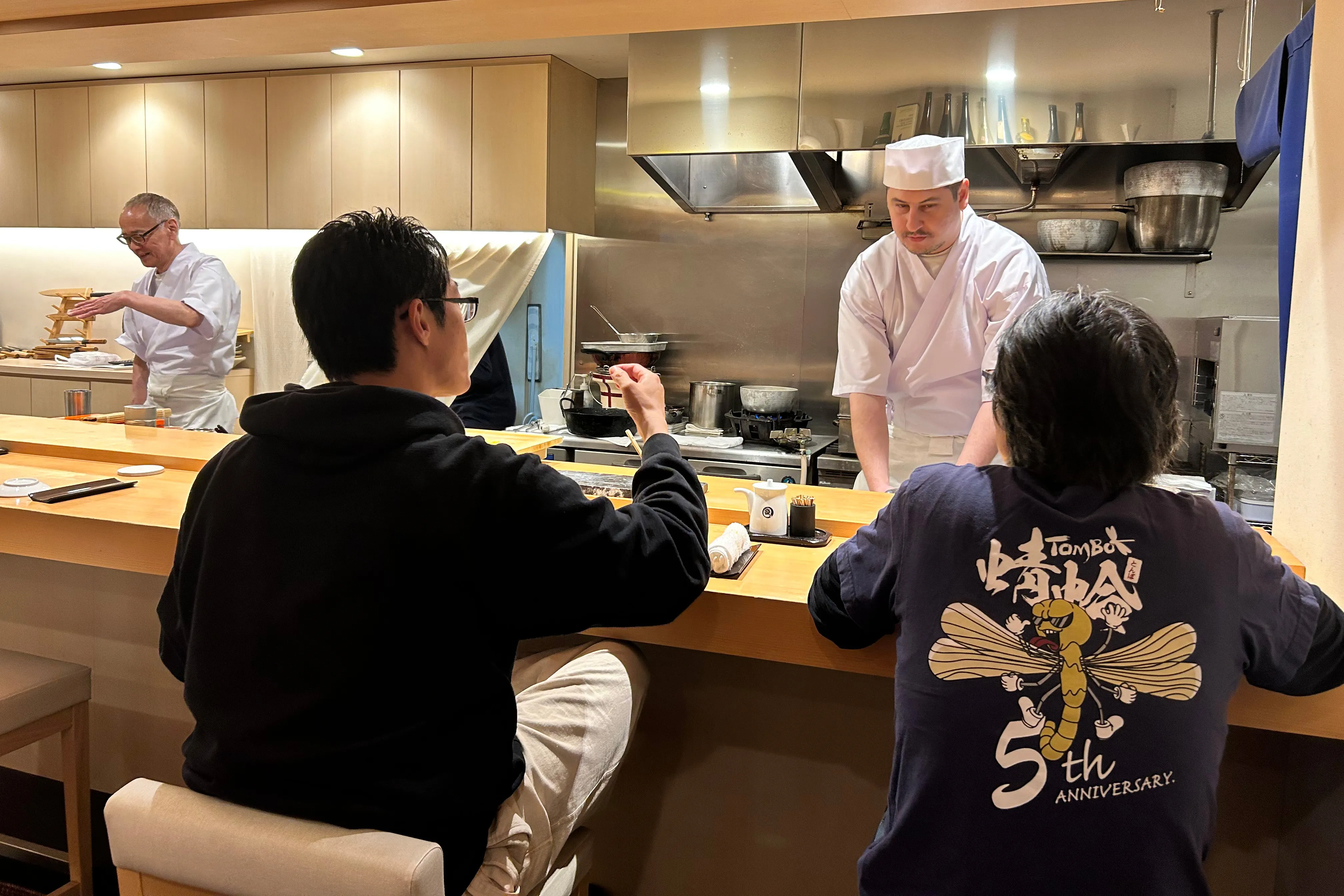
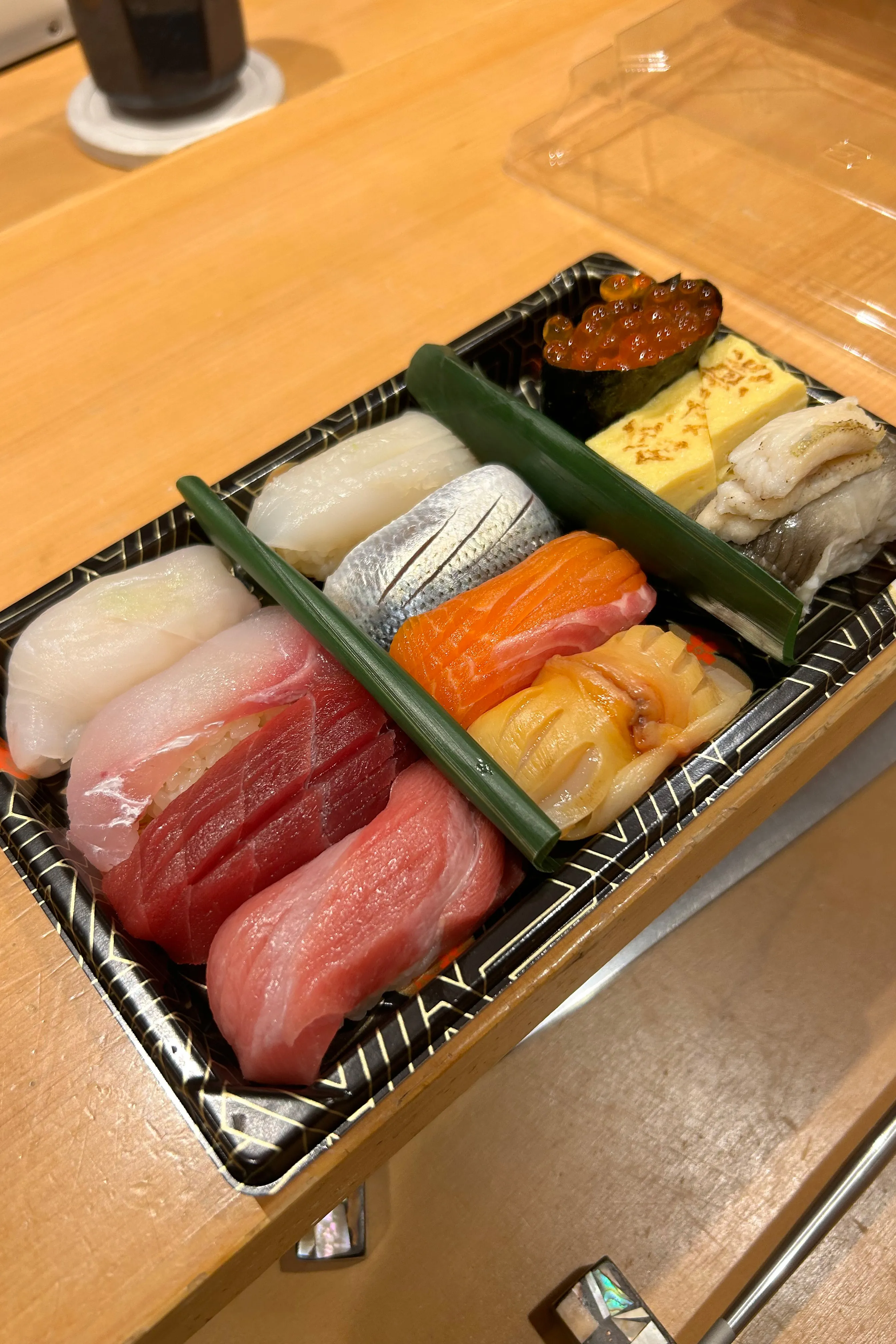
This is the third hands-on training session, during which the student serves sushi to the representative of our school and staff, who act as customers, while observing the operations of the real sushi restaurant at night. He demonstrates the results of his daily hard work and is praised for his performance. Hang in there for the remaining few days with confidence!
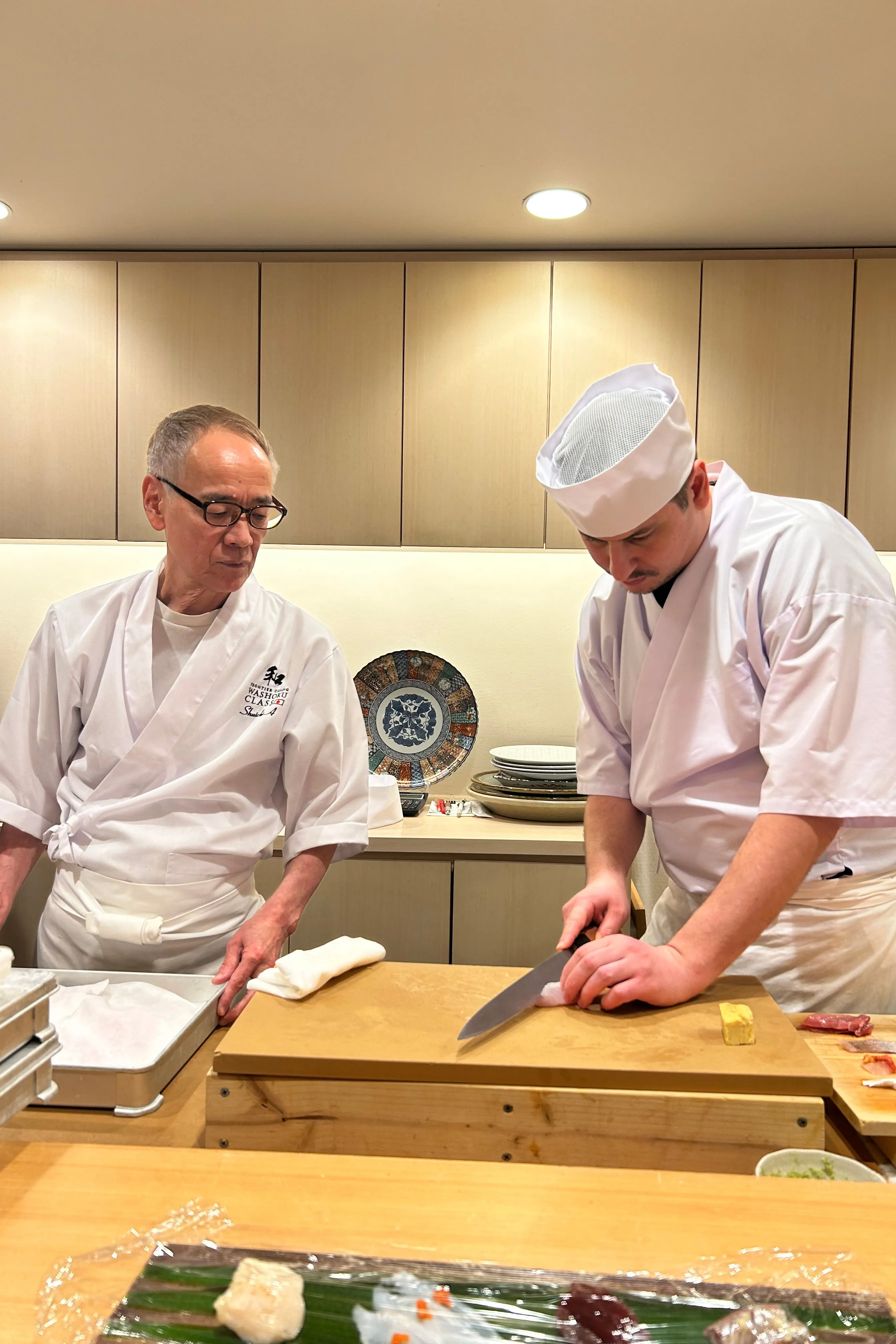
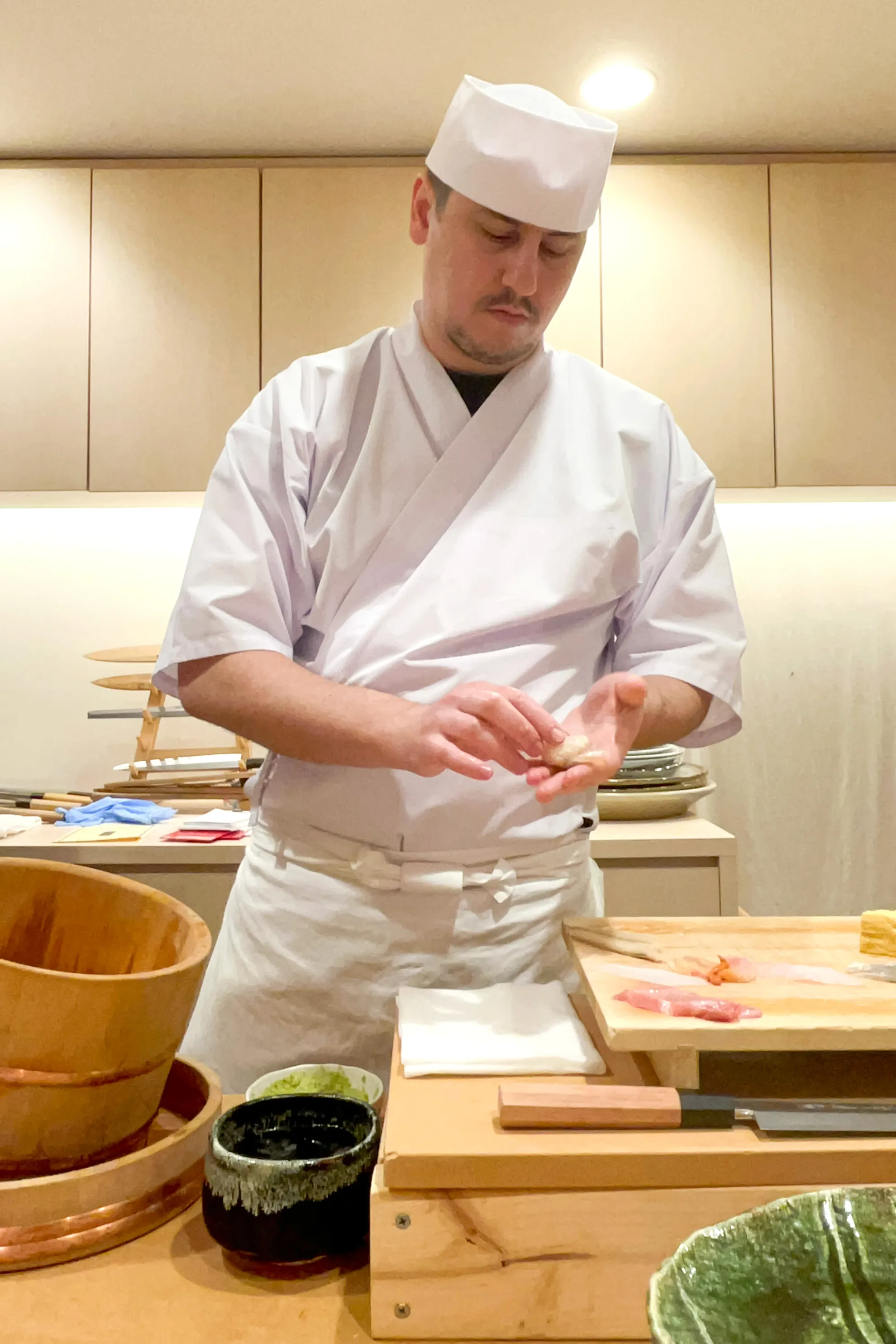

After intense and repetitive practice of both basic and advanced skills, the final assignment is serving a sushi assortment to the instructor. The student has successfully completed the 4-Week Sushi Course! (although he still has to serve sushi to the patron at night). He has shown remarkable improvement compared to the first day.
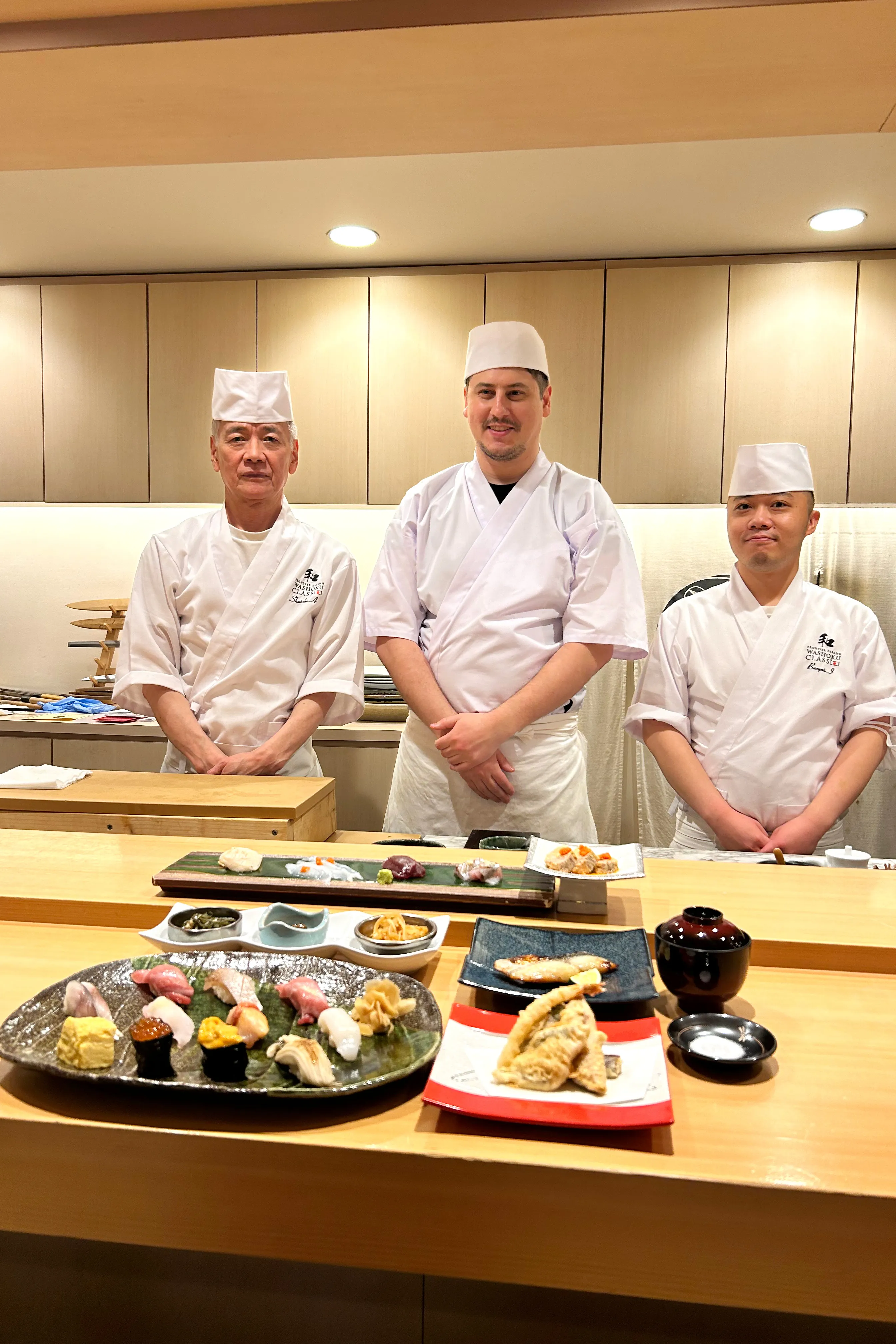
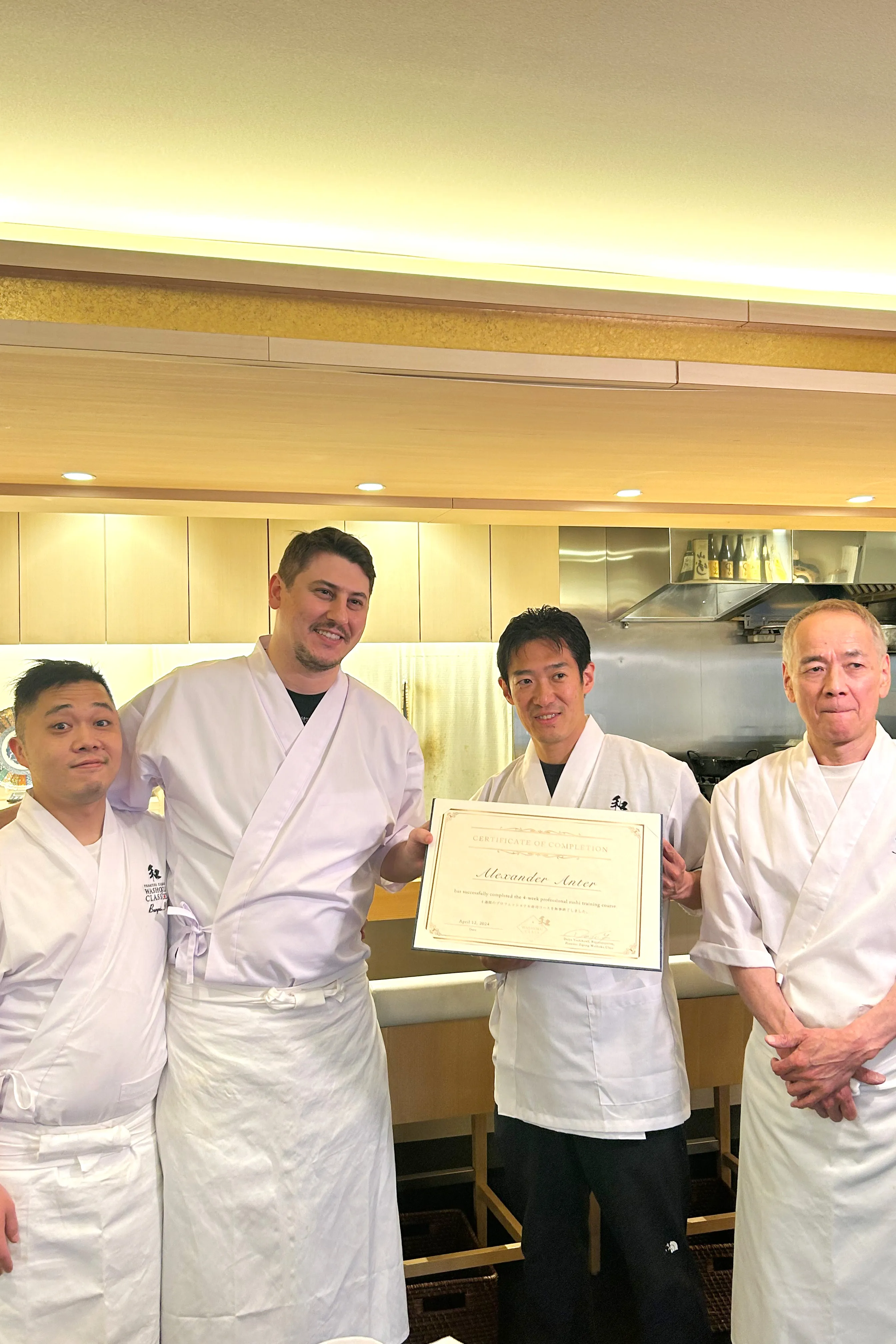
Gaining rich experience is essential to becoming a professional sushi chef. Regardless of the number of years one works in this role, continuous efforts for skill improvement are necessary. We hope that even after returning to his own country, the student will continue to practice every day to become a chef who can satisfy his customers.
In the future, when he opens his own restaurant, we would love to visit him. We wish him all the best in his future career as a chef and for the success of his restaurant. Please feel free to ask us anytime if you have any problems or questions.
Good luck!
